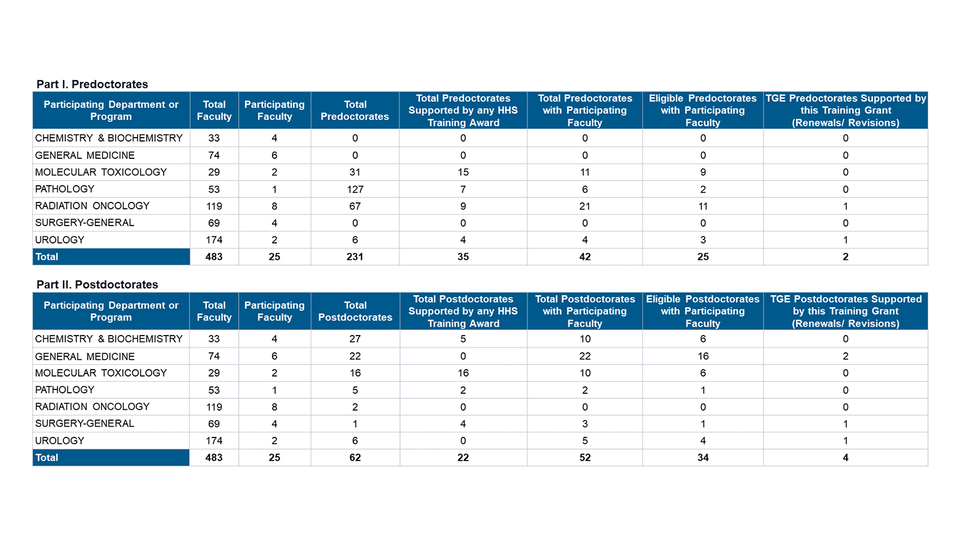Table 1. Census of Participating Departments or Interdepartmental Programs
Overview
This is the first table reviewers see, and provides the main context of the grant and a broad overview of UCLA’s training environment. It assures NIH that UCLA has enough trainees, faculty, and representation/distribution of scientific disciplines to support your requested number of trainees.
Overall Instructions
Parts I (Pre-Docs) & II (Post-Docs)
- Only include data from the current academic year.
-
Include information for “participating departments, clinical divisions, or interdepartmental programs" by listing PD/PI(s)’ and mentors’ departments, divisions, and/or interdepartmental graduate programs. For more information visit our FAQs.
- All programs must list both Part I and Part II regardless of whether pre-doc and/or post-docs are proposed.
-
All programs must list both Part I and Part II regardless of what kind of student the application is supporting (pre-doc, post-doc, or both).
- Participating departments should be the same for both Part I and II.
- The focus of this table is on the potential eligible trainees, not on the faculty’s home departments (home departments are disclosed in Table 2). Departments in Table 1 and Table 2 do not have to align.
- Pre-docs (Part I) and post-docs (Part II) must be included if they are part of a participating department regardless of whether the application includes them or not; omit if there are no pre- or post-docs in the participating department(s), respectively.
- Mentors may be listed more than once if they participate in both a departmental and program but may not be counted more than once in the final total.
- Only count pre- and post-docs once (i.e. within a single department / program).
- Bold all totals in the final row.
- Page Limit: None. For more information visit our FAQs.
Summarize Table 1 data in the Research Training Program Plan narrative Background and Program Faculty subsections.
Helpful Hint
Ensure a Significant Pool of Trainees
- The total count of pre/post-docs in Column 7 (Eligible Pre/Postdoctorates with Participating Faculty) is critical because it gives reviewers a quick assessment of the competitiveness of the program. Adjust mentors or departments to maximize this count. If the total count is low compared to the number of training slots you are proposing, consider if mentors belong to other departments or programs with more competitive eligible trainee numbers and include those departments. Remember that you can always provide an explanation for low counts in the program plan.
- Example: Dr. Aziz’s new T32 application proposes 2 pre-doc and 4 post-doc slots. A preliminary Table 1 report shows 12 eligible pre-docs and 7 eligible post-docs in Column 7 (Eligible Pre/Postdoctorates with Participating Faculty). Dr. Aziz is happy with how competitive the pre-doc program will be, a ratio of 1:6 will read as robust for the nature of this program. However, the post-doc program is not adequately competitive. Dr. Aziz reviews participating faculty and departments and notices that one of the mentors has a duel appointment in a department not previously listed on the table. By adding that department, the number of eligible post-docs increases to 15, which tells a more accurate story of the potential applicant pool but is still not as high as he’d like. Dr. Aziz decides to add one more mentor who has an additional 5 eligible post-docs. This new mentor and accompanying department increase the total to 20, which is appropriately robust for this project proposal.
Guidance by Column
- Participating Department or Program. Ensure formatting is consistent in naming conventions of Departments/Programs
- Total Faculty. Number of current faculty*
- Participating Faculty. Number of mentors on the proposed training grant with an appointment in that department (total should match the number of mentors on Table 2)*
- Total Predoctorates (Part I) / Postdoctorates (Part II). Include a total for each participating department/program
- Total Predoctorates (Part I) / Postdoctorates (Part II) supported by any HHS Training Award. E.g., T32, T90/R90, F32, AHRQ T32, CDC T03
- Eligible Predoctorates (Part I) / Postdoctorates (Part II) with Participating Faculty. Number of pre- (Part I) or post-docs (Part II) currently being mentored by mentors in the proposed program
- Eligible Predoctorates (Part I) / Postdoctorates (Part II) with Participating Faculty. Out of the total from Row 6, list the number who would be eligible to participate in the proposed training grant; in most cases (i.e. T32s) this only includes citizens, non-citizen nationals, or permanent residents of the US
- Training Grant Eligible (TGE) Predoctorates (Part I) / Postdoctorates (Part II) Supported by this Training Grant. For Renewals/Revisions ONLY. Total number of TGE pre- or post-docs currently supported by this training grant (as of the academic year in which you are applying)
- Predoctorates Supported by this Training Grant (T90/R90 Renewals/Revisions). ONLY complete if this application is for an T90/R90 Renewal or Revision. Total number of pre- or post-docs currently supported on the T90/R90
*Calculating Totals Correctly:
- Faculty & Post-Docs: Only sum unique individuals. Do NOT double count faculty and post-docs who may be in multiple departments/programs, although they must still be included in the individual totals for those departments/programs. Enter all totals in bold.
- Pre-docs: Pre-docs can only reside in a single PhD program, so sum each department/program count normally.
Sample Table 1
Note: Follow NIH formatting guidelines – this is a visual demonstration and does not reflect NIH formatting or accurate information/data.
Table 1. Census of Participating Departments or Interdepartmental Programs

Note: Column 9, "Predoctorates/Postdoctorates Supported by this Training Grant (R90 only Renewals/ Revisions)," is not represented because this sample is representing a T32 renewal, not an T90/R90.
Templates
- NIH Blank Template: Table 1 (Microsoft Word)
- Contact GSUTraining@mednet.ucla.edu for formatted Microsoft Excel templates
NIH Resources
-
Data Table Form Library (Please note as of January 2023 NIH is still utilizing FORMS G for Data Tables)
- Consolidated Sample Data Tables and Instructions (Microsoft Word)
- Blank Data Table Template (Microsoft Word)
- Data Table FAQs